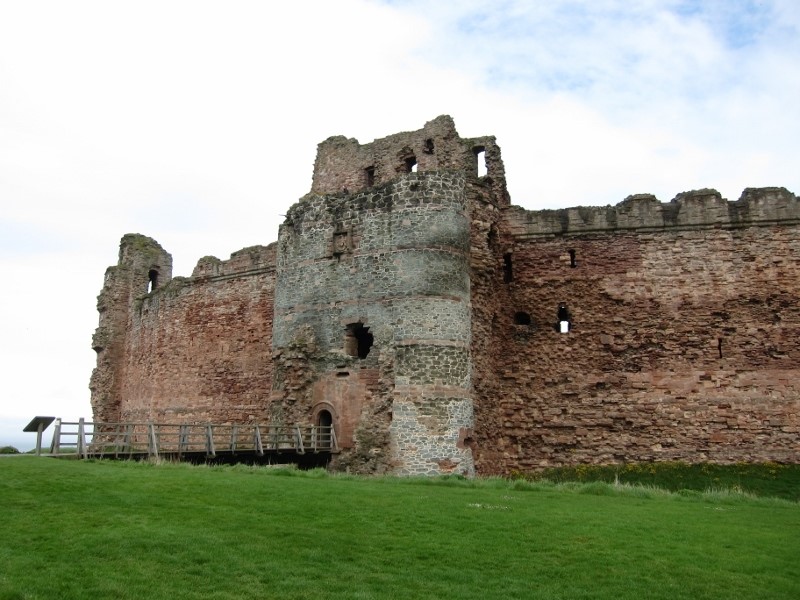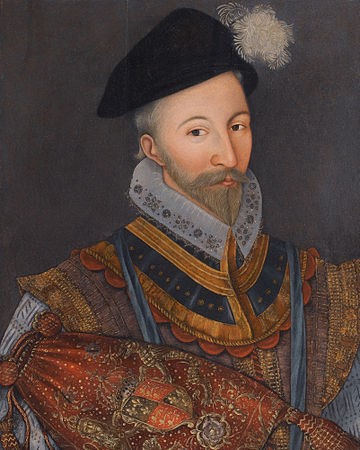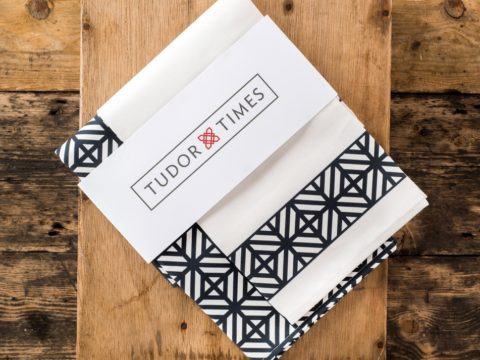James V: Life Story
Chapter 4 : James Takes Power (1528 - 1534)
At Easter 1528, now aged sixteen, James called his Privy Councillors together and confronted Angus, claiming that he was promoting his own relatives at the King’s expense; failing to keep peace in the Borders (thus undermining the three year truce with England) and offending foreign ambassadors. Angus promised to mend his ways by sending a force to the Border to hang a few outlaws, and summoned troops.
In May James wrote to Henry VIII that these troops, far from being levied to protect the Borders, were part of a plot by Angus to kill him (James). Somehow, between 27 th May and 30th, James gave Angus the slip, and appeared at Stirling, where his mother was in residence. James was now supported by Arran, Beaton (who, as anticipated by George Douglas, had double-crossed Angus), Lord Maxwell and the Earl of Argyll. In his triumph, he wrote to his uncle, Henry VIII, proclaiming that Angus and his brother had been commanded to give themselves up, but had disobeyed and were wreaking havoc in the country.
The Estates were summoned for 2nd September, and Angus should have attended, but failed to do so. He claimed that his disobedience in not giving himself up was justified as he and his supporters would have been in danger of their lives. As for the troops that had been gathered in May, it was done by the King’s own command to take reprisals against the Border warlords.
Angus retired to his castles, first Coldingham, then Tantallon,
which he fortified (but ‘not to the prejudice of the King’.) He still hoped to
negotiate from a position of strength. James besieged Tantallon, but his
artillery was captured by Angus (who returned it so as not to offend too
deeply.)

The three-year truce with England had expired, and Henry and James’ Commissioners met to agree new terms. The English initially sought the reinstatement of Angus, but the Scottish Commissioners refused, and queried why Henry would want to support a rebel. It also became apparent to Henry and Wolsey that Angus had nothing like the support in Scotland that he had previously claimed.
The English, now aiming to ally with France against the Emperor (partly in the hope of French support for Henry’s annulment, which was largely occupying his mind) chose not to press the point of Angus’ reinstatement and peace was renewed. This did not stop the English from continuing to subsidise Angus’ in ‘doing all the mischief he could’ in subsequent years.
A five year peace was concluded in December 1528, and Angus and his daughter, Lady Margaret Douglas, who had been held by her father as a bargaining chip against her mother, Queen Margaret, were exiled to England. This did not prevent him working to undermine James from the safety of England.
James took up his authority with panache, rewarding and promoting men who had supported him, or been close to him such as Gavin Dunbar, who was now appointed as Chancellor. One of James’ early actions was to set about improving matters on the Border, where he led an expedition in 1529 with the aim of punishing criminals. Unfortunately, it met with little success.
He also wrote to Henry VIII, thanking for his support during his minority (presumably his tongue was firmly in his cheek) and then explaining his own activities in trying to keep the peace. He mentions that the Earl of Northumberland has been rather slack about attending the regular meeting days, and was not redressing the crimes of English subjects in Scotland.
The following year (1530), suspecting some of the nobles with interests in the Border of undermining his authority, he arrested a number of them, including the Earl of Bothwell, and Lords Home and Maxwell. He then gathered a larger force and captured a large number of miscreants, some of whom gave surety for good behaviour, but some were executed. Although James has subsequently been criticised for severity, the men executed were blackmailers (in the sixteenth century sense of extorting protection money), thieves and burners of women and children in their homes.
James also faced trouble in the Highlands and the Isles. The Isles had only been integrated with the Scottish Crown in the reign of his father, James IV, and there was continued strife between the different clans, and between them and the central authority.
Under Albany, Argyll had effectively been given lieutenancy over the southern Isle, and the Earl of Huntly over the northern lands. Both protested their loyalty and eagerness to pacify the clans for the benefit of the King, but clan feuds and revenge seem to have been part of the plan. In 1530, Argyll, who had been a supporter of James against Angus, sought permission to proceed against Alexander of Islay. After some hesitation, this was granted, but Argyll died shortly after.
With the help of James’ illegitimate half-brother, the Earl of Moray, and the new Earl of Argyll, the clan chiefs submitted, but complained about Argyll’s actions. James investigated, and stripped Argyll of his offices, granting them to Alexander. One of the underlying causes of this renewed trouble in the Highlands and Islands, was MacLean of Dowart’s ill-treatment of his wife, Argyll’s sister. He is said to have chained her to a rock, and left her to drown. She was rescued by a passing boat, and her brother, in revenge, broke into MacLean’s bedchamber when he was in Edinburgh in 1523, and stabbed him to death.
Feeling his strength, James wrote a very short letter to Henry VIII, saying that he could not grant Henry’s request for the restoration of Angus to office without ‘great inconvenience’ and asking him to desist from intervening in the matter.
The exertion of control by James was not popular with his lords either in the Borders or the Highlands, and there was an attempt led by Bothwell, Argyll, Maxwell, Moray and others to overthrow him. James managed to suppress this, by dint of reconciliation with Moray. He then set about giving Henry VIII a taste of his own medicine by paying for Highlanders to assist Irish rebels against England.
Border raids continued, with James and Henry writing to each other, blaming the other’s officers for not keeping the peace and giving redress as required. In 1532, eager to improve relations with France, in support of his annulment, Henry was more conciliating to James, suggesting that he attend the planned meeting at Calais, between Henry and Francois, and inviting James to travel there via England. He also sent expensive gifts. James declined to visit on this occasion.
Eventually, a further truce was agreed in May 1534, to last a year longer than the death of either monarch. Again this was part of a wider peace between France, England and Scotland. James received the Order of the Garter from England, and the Order of St Michel from France in token of everyone playing happy families.

Following James’ election to the Order of the Garter, Henry sent Lord William Howard (brother of the Duke of Norfolk) and Garter King of Arms to take James the accoutrements of the Order, including the Garter Book. The book itself was an elaborate and expensive confection. Written on vellum, with illuminated letters and arms, it was bound and gilded, covered in purple velvet, and laced with purple silk laces. Attached by green and white silk laces were the seals, and the bag was enclosed in a bag of red satin, lined with red sarcenet and drawn with red silk laces. The bag was ornamented with Venetian gold, and encased in a box.
